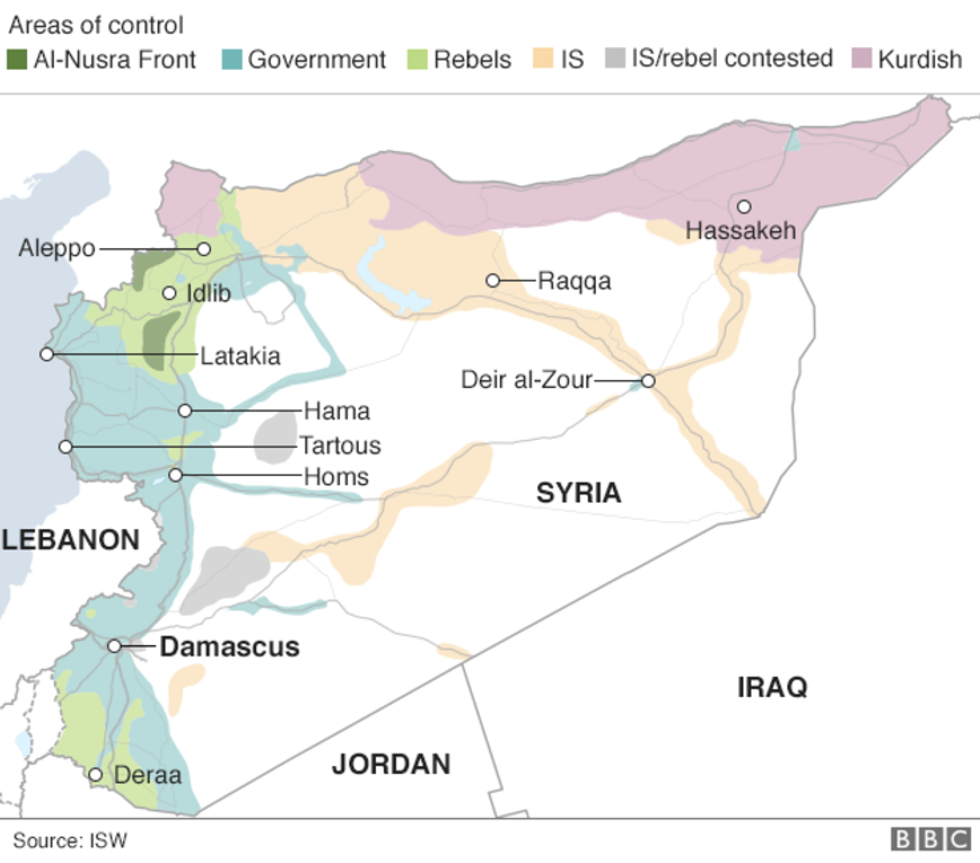On March 14th, Vladimir Putin announced a withdrawal of Russia's air support from Syria in a move that has surprised many in the international community. The morning of March 16th, the second batch of fighter jets left Russia's Khmeimim airbase to further punctuate Putin's Monday statement. Currently, only a few troops and some military hardware are left in Syria, in addition to the troops at Russia's naval base in Tartus. Russia has also left some armaments for Assad's war-torn army to use in maintaining its current gains. This, however, should not be considered a sign of weakness by Russia. In fact, it is a testament to Russia having achieved its objectives in Syria. It is important to note that Russia's air campaign was, from its very inception, meant to be a temporary involvement rather than a protracted commitment.
The memory of Russia's blood-soaked invasion of Afghanistan is still firmly etched into the minds of many Russians, and limiting involvement to that of an air campaign allows Russia to maximize its firepower without much risk to Russian military personnel. The troop reduction goes hand-in-hand with Assad's recent military gains, the most notable of which is the Syrian army's severing of rebel supply lines that lead from Aleppo to Turkey. The map below shows how the Assad regime's comeback has been particularly evident in the North-West, with the government now firmly controlling the small area between Aleppo and Turkey.
The objective of the air campaign was to stabilize Assad in a bid to protect Russia's ally from certain destruction rather than to fight ISIS, which is what Putin had initially declared the Russian involvement was for. From here, table during the peace talks. From here, Russia has been pushing Assad towards reaching a political solution rather than committing towards enabling the regime in waging an even bloodier reconquista of the entire country.
The withdrawal of Russian troops serves to highlight the fact that Russia wishes to be perceived as a nation that is capable of both protecting its interests as well as promoting peace within the region. This is especially powerful when taken within the context of the U.S. involvement in the Middle East. Whereas Russia's involvement in Syria consisted of a relatively small-scale and short-term use of military force that resulted increased dialogue in the peace-talks, the U.S.'s involvement in Iraq can be seen as a a large-scale and long-term military occupation that resulted in still yet more chaos. Also the Russians' air campaign in Syria has produced had a profound effect in the region, where as the effects of the U.S.'s air campaign against ISIS are less apparent.
To potential Middle Eastern partners, Russia has proved to be both a loyal and competent candidate that values peace rather than occupation. As it stands, the Syrian regime's hand is slightly stronger than that of the rebels' hand, however both the North-West and South-West of Syria still are controlled by rebel factions, thus indicating that Assad's hand is stronger, but not by much. For peace to be reached, compromise must be reached, and Assad will be able to extract more concessions from the rebels due to its improved position from which he can negotiate. Provided that Assad and the rebel factions reach a deal and decide to cooperate, the Syrian civil war might be over a lot quicker than previously thought.





















